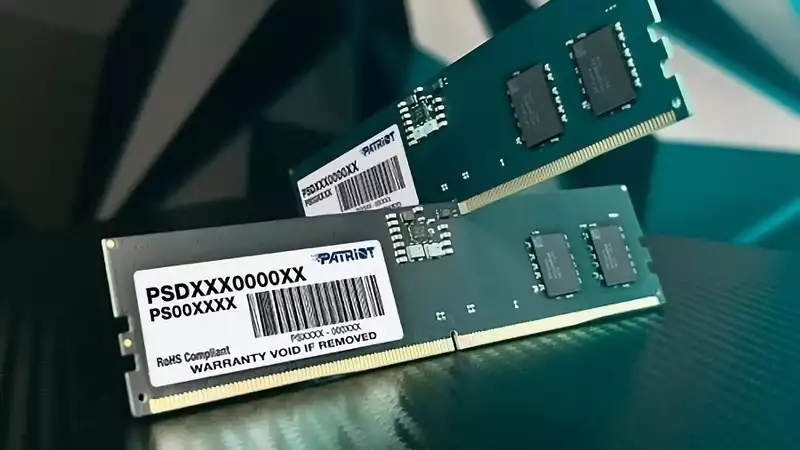JEDEC is a standards body that has been laying the groundwork for RAM clock speeds and timing for decades; in the case of DDR5, the latest version of double data rate memory for PCs, the default speed is 4800 MT/s, which is fully compatible with all AMD and Intel CPUs to ensure full compatibility with all AMD and Intel CPUs. However, the Patriot Group is developing a type of DDR5 stick that pushes this to 6400 MT/s or higher, even if the CPU itself does not normally support that speed. [The JEDEC standard is DDR5-4800, but all of AMD's Ryzen 7000 series CPUs run at DDR5-5200, and Intel's 14th-generation Core processors support DDR5-5600. Still, these chips can often use even faster RAM, such as DDR5-6000.
The problem is that to support these speeds, the integrated memory controller (IMC) must run faster than it is designed to handle, and there is quite a lot of variation in IMC quality.
From left to right, Patriot and its CKD DDR5 project (via Tom's Hardware). The job is to create a RAM stick that will run at speeds of up to 6400, even if IMC is unstable in that configuration. This is not magic, just engineering, and more specifically, using what is called a client memory clock driver (CKD for short). [This is a chip that buffers the clock signals between the IMC and the DRAM module, reducing the load on the IMC. Server-grade memory has had such a feature for quite some time, and Team Group has already gotten ahead of Patriot by adding CKD to its Elite DDR5 series, allowing stable operation up to 6400, though Patriot's new module has the same goal, Patriot is trying to take it even further, up to 7200.
Faster RAM means more memory bandwidth for the CPU, which ultimately leads to better performance, especially in games. However, trying to run a Ryzen 7 7800X3D, for example, on DDR5-7200 is nearly impossible, and AMD has stated that DDR5-6000 is the sweet spot for Ryzen chips. Intel's latest Core processors can handle faster processing, but beyond 7000 that processor also becomes unstable.
The downside of using CKD is the fact that data transfers are suppressed by at least one clock minute, and to ensure complete stability, Patriot and others adopting CKD will use slower timing and lower voltages.Latency-sensitive applications may want to avoid using DDR5 modules with CKD, but for everyone else, they can buy a fast DDR5-6400 kit or faster and install it in their PC without any problems That is. And in a few years, they may well be installing DDR5-8400 or better.
Of course, this does not mean that they will be cheap.
But vendors will price CKD models higher than standard ones, not only to recoup R&D costs, but also to sell their products as enthusiast-level items.
It wasn't that long ago that DDR5-5200 was very expensive, but now you can get a fast dual-channel kit for relatively cheap.
I predict that CKD-controlled DDR5 will not only come down in price, but will become the standard. Just wait for the memes to roll in when the first DDR5-9000 kits come out.


Comments